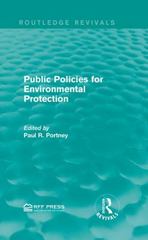Economic Growth Akila and her family are the only inhabitants of a small oasis in the middle of the desert. They grow various kinds of trees, which provide them with everything they need, Akila has built an irrigation system that improves the productivity of the land. Production makes use of three factors: capital K (the irrigation system), labour N (the work done by Akila and her family) and land & (the oasis and the desert around it). The production function is given by F(K, N.L)= K N D. Labour supply is fixed at N=1 and the family owns 64 units of land, 2-64. The irrigation system is in constant need of repair; about 10% needs to be rebuilt every year to keep it in a good condition, i.e. K'=K --K+ /, where / is investment in the capital stock. 1. Show that for a saving rate s, the law of motion for the capital stock can be written in per-capita terms as k'=k - -k+ $2vx. 2. Find the steady-state level of the capital stock &, output y and consumption c as functions of s. 3. Currently, Akila is saving 25% of the output to re-invest it in the irrigation system. What are the resulting steady-state levels of &, y, and c? 4. The family considers adjusting the saving rate to 50% or 75%. What would be the steady state levels of k, y, and c in these cases? 5. If the family cares about consumption in the long run, what saving rate will it prefer: 25%, 50% or 75%? 6. Now suppose that Akila decides to increase the saving rate to 50%, starting today. The capital stock is still at its old steady state level, which you determined in part 3 above. Use the law of motion from part 1 to calculate how & evolves for the first 20 years after raising the saving rate. Also calculate output and consumption for these 20 years. (If you use a spreadsheet program like Excel, which I recommend, calculate the values for 100 years and plot them.) 7. What is the half-life of the output gap, i.e. how many periods does it take until output adjusts half way from its original level to the new steady-state level? 8. How long does it take until the family actually benefits from the higher saving rate and has a higher consumption level than in the original steady state? 9. Is it possible to reach the steady state associated with the 50% saving rate while ensuring that consumption never drops below a. its original level of 7.5 or b, level of 7? Explain briefly







